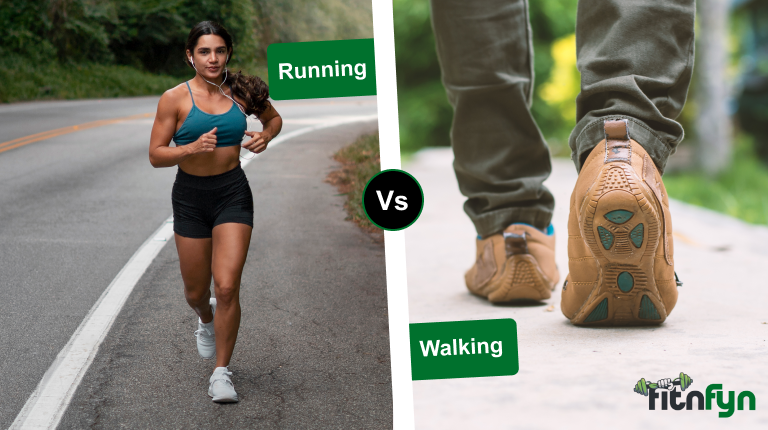
Table of Contents
ToggleIntroduction
When it comes to weight loss, walking and running are two of the most popular cardio exercises. But which one is more effective? Some claim running burns more calories, while others argue that walking is a sustainable, low-impact alternative that still delivers results. In this article, we’ll break down the benefits of both walking and running to help you decide which exercise is best for your weight loss goals.
Calories Burned: Walking vs. Running
Caloric burn plays a crucial role in weight loss. Here’s a comparison of how many calories you burn in 30 minutes based on body weight:
| Activity | 125 lbs (56 kg) | 155 lbs (70 kg) | 185 lbs (84 kg) |
|---|---|---|---|
| Walking (3.5 mph) | ~120 kcal | ~150 kcal | ~180 kcal |
| Running (6 mph) | ~300 kcal | ~370 kcal | ~445 kcal |
Key Takeaway: Running burns roughly 2-3 times more calories than walking in the same time frame.
Benefits of Walking for Weight Loss
1. Low-Impact & Joint-Friendly
Walking is gentler on the knees, hips, and ankles, making it ideal for people with joint issues or those new to exercise.
2. Easier to Sustain Long-Term
Since walking is less intense, people are more likely to stick to a consistent routine without burnout.
3. Fat Burning & Steady Weight Loss
Walking at a brisk pace (3.5–4.5 mph) primarily burns fat rather than carbohydrates, making it an effective exercise for steady weight loss.
4. Can Be Incorporated Into Daily Life
Walking is easy to integrate into daily activities—whether it’s walking to work, using stairs, or taking evening strolls.
Benefits of Running for Weight Loss
1. Burns More Calories in Less Time
Running at a moderate pace doubles or triples calorie burn compared to walking, making it a time-efficient exercise for weight loss.
2. Boosts Metabolism & Afterburn Effect
Running increases EPOC (Excess Post-Exercise Oxygen Consumption), meaning you continue burning calories even after your workout.
3. Builds Endurance & Cardiovascular Health
Running strengthens the heart, improves lung capacity, and enhances overall endurance, helping with long-term fitness.
4. Helps Reduce Belly Fat Faster
High-intensity running (like sprints or interval training) has been shown to target belly fat more effectively than low-intensity exercises.
Walking vs. Running: Which Is Best for You?
- Choose Walking If:
- You have joint pain or injuries.
- You prefer a low-impact, sustainable exercise.
- You enjoy a more relaxed, social workout routine.
- Choose Running If:
- You want faster weight loss and higher calorie burn.
- You have no joint issues and can handle higher impact workouts.
- You want to boost endurance and metabolism.
Maximizing Weight Loss: Tips for Both Walkers & Runners
- Incorporate intervals – Alternate between slow and fast speeds to increase calorie burn.
- Add resistance – Walking uphill or running on an incline engages more muscles.
- Stay consistent – Aiming for 30-60 minutes of daily activity is key.
- Combine with strength training – Adding resistance exercises boosts fat loss and muscle tone.
- Monitor diet – Weight loss is 80% diet, 20% exercise, so a healthy eating plan is crucial.
Conclusion: The Best Exercise Is the One You Stick To!
Both walking and running can help with weight loss, but the best choice depends on your fitness level, lifestyle, and personal preference. If you’re looking for quick calorie burn, running may be the better option. However, if you need a sustainable, joint-friendly exercise, walking is an excellent alternative. Ultimately, consistency is what leads to long-term weight loss and better health.
